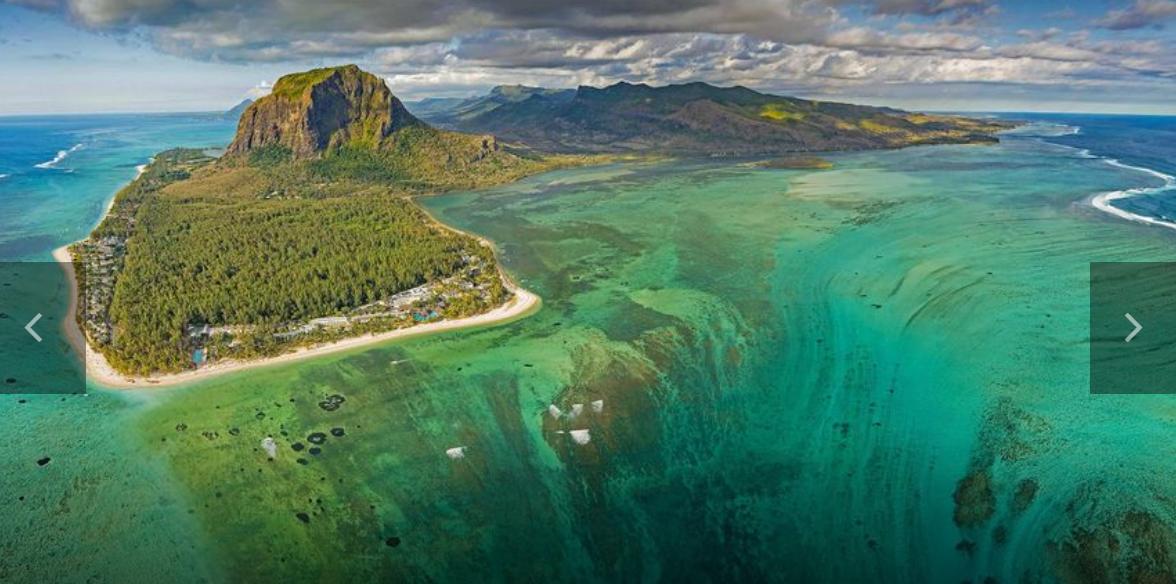
Le Morne Brabant, MauritiusLe Morne Brabant
Le Monn Brabant, Mon Brabant, Mauritius
© Hemis/Alam©
© Hermis/Alam ©
Getting to the bottom of the underwater waterfall
Reach the bottom of the underwater waterfall
From this vantage point high over the Indian Ocean, we have a spectacular view of the 'underwater waterfall' formed off the coast of Mauritius.
From this vantage point high in the Indian Ocean, we can see the spectacular sight of the "underwater waterfalls" formed off the coast of Mauritius.
Not a true waterfall, this is an optical illusion - it's really the trails of sand and silt deposits on the seafloor being washed by ocean currents through an opening between coral reefs. It's an optical illusion – it's actually traces of sand and silt deposits on the ocean floor that have been washed away by ocean currents through the gaps between coral reefs.
But we're probably not alone in thinking at first glance that the ocean is pouring into some massive unseen drainpipe.
But when we first saw this, we probably didn't just think the ocean was pouring into a giant invisible drainage pipe.
Our viewpoint also offers a clear look at the huge basalt monolith in the distance towering over the peninsula called Le Morne Brabant.
From our point of view, we can also clearly see the huge basalt boulders towering over the peninsula called Le Morne Brabant in the distance.
Originally uninhabited by humans, the island of Mauritius became an important stopover in the slave trade by the 18th century.
The island of Mauritius, originally uninhabited, became an important transit point for the slave trade in the 18th century.
Some slaves managed to escape while on the island and made their way to the many caves and overhangs on the steep slopes of Le Morne.
Some slaves managed to escape on the island and marched towards le Moen's many caves and protrusions on the steep hillside.
There, these 'maroons' hid from slave traders and eventually formed enough settlements that Mauritius became popularly known as the Maroon Republic, and Le Morne a symbol of the slaves' resistance, suffering, and sacrifice.
There, these "maroons" escaped slave traders and eventually formed enough settlements that Mauritius became known as the Maroon Republic, and Le Morne was a symbol of slave resistance, suffering and sacrifice.